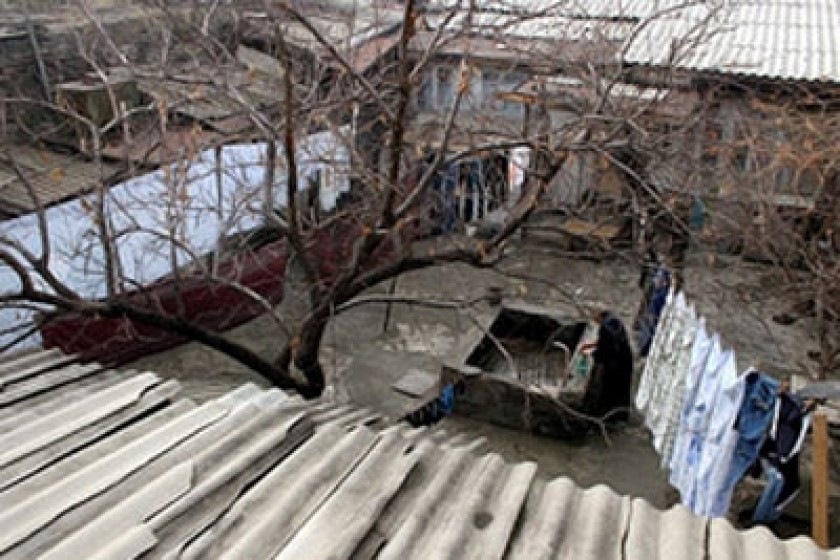
Old Yerevan Should be Rebuilt in Kond
The district of Kond was established in the 17 th century and hasn't been architecturally modified since then. Houses were built on top of each other, storing history beneath them - both buildings and belongings. People in Kond love the place they live in, and don't care about the appalling conditions there. Architect Sevada Petrosyan believes that money can be made in Kond.
Writer and historian Edvard Avagyan explained, "Kond is our history. In the 17 th century many of those who founded Old Erivan lived here. The famous Aghamalyan dynasty lived in Kond." Avagyan said that the Aghamalyans had a luxurious villa, which contemporary accounts also referred to as a fortress in Tapabash Street. The Church of Saint Hovhannes Church, built in the 15 th century and ruined in 1679 was rebuilt by Melik Aghamalyan in 1710 to become the family's private chapel.
 |
 |
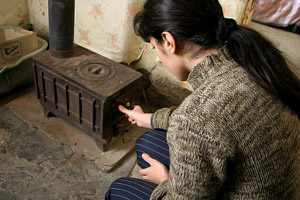 |
 |
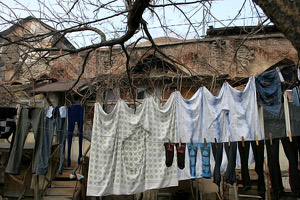 |
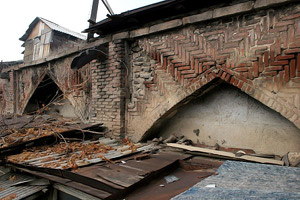 |
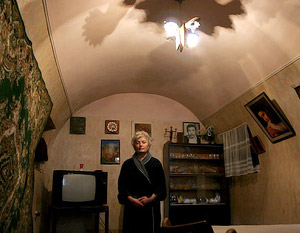 |
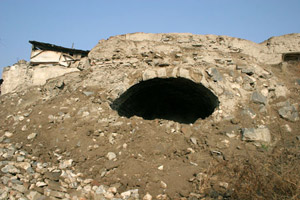 |
Avagyan added that in 1837, Russian Czar Nikolay I stopped in Kond, at the house of the Balackachov family.
Later, Kond became home to refugees from the 1915 Genocide, who altered the houses they moved into or built new ones, giving the district the look of their lost homeland.
The mysterious part is what remains beneath the ground that residents of Kond live on today. From time to time remnants of the past are discovered in the tunnels and cellars. When Areg from Kond broke down the wooden door of his cellar for the first time he discovered a beautiful space with Persian-style architecture. Pointing out a black hole in a corner of the cellar, Areg explained that the place had been a cemetery. He said that he and his brother once entered it, only to flee in terror. "If you put your hand there, it will be sucked in, it's sand, not soil. From over there I retrieved a pot as tall as I am," Areg said. Architect Sevada Petrosyan confirms the largest cemetery of old Yerivan used to lie between Kond and Kozern (currently Baghramyan Street) on what is now Demirchyan Street.
There were Muslims living in Kond alongside Armenians, as the old mosque bears witness. After the Genocide seventeen families took refuge in the mosque, and their descendants still live there. Years have changed the exterior of the mosque; now only the walls reveal the true origin of the building to the careful observer. The main dome of the mosque collapsed in the1960s, but the smaller one is still standing, with damp, ancient 1.5-meter-thick walls and people living inside. One of them, Mrs. Olga, told us, "My apartment used to be the imam's room." To the right of the mosque one can see the old tearoom, where Muslims used to drink tea after prayers.
Anahit remembers that they lived in peace with the foreigners who lived in Kond. Asked where the foreigners are now, she replied that most have grown old and died. The rest exchanged their houses with Armenians in Baku in 1988 and left the country.
Kond is of unique importance because it is one of the few places in Yerevan which has conserved its historic appearance. It had its own city environment before Yerevan took shape. Today it retains its own atmosphere, and its own system of self-government. Although it lacks its own water and sewer system, the streets of Kond are usually cleaner that those of the rest of Yerevan.
Architect Sevada Petrosyan agrees that although houses in Kond may be run down, but she does not think that the solution is to dump the old and replace it with the new. She believes that there is money to be made in Kond. Living standards should be brought closer to the norm and old Yerevan should be created where Kond is, between the center of the city and Proshyan Street. Tourists could eat and drink in the restaurants along Proshyan and then go to the center through Old Yerevan, stopping along the way at the renovated Chaykhana Teashop. "What is Venice, in the end? There is no sewer in Venice, either, but people dream of going there."
The children and adults who live in Kond love the place and ignore the poor living conditions. 70-year-old Hranush Khachatryan compared her house in Kond with the damp old hut in a fairy tale, inhabited by a mother and son. One day, the mother sends her son to find a place to build a house. The son travels all over the world and comes home saying, "Mother, there is no better place in the world than our hut."
Arpi Maghakyan
Photos by Onnik Krikorian
 Videos
Videos Photos
Photos
Write a comment